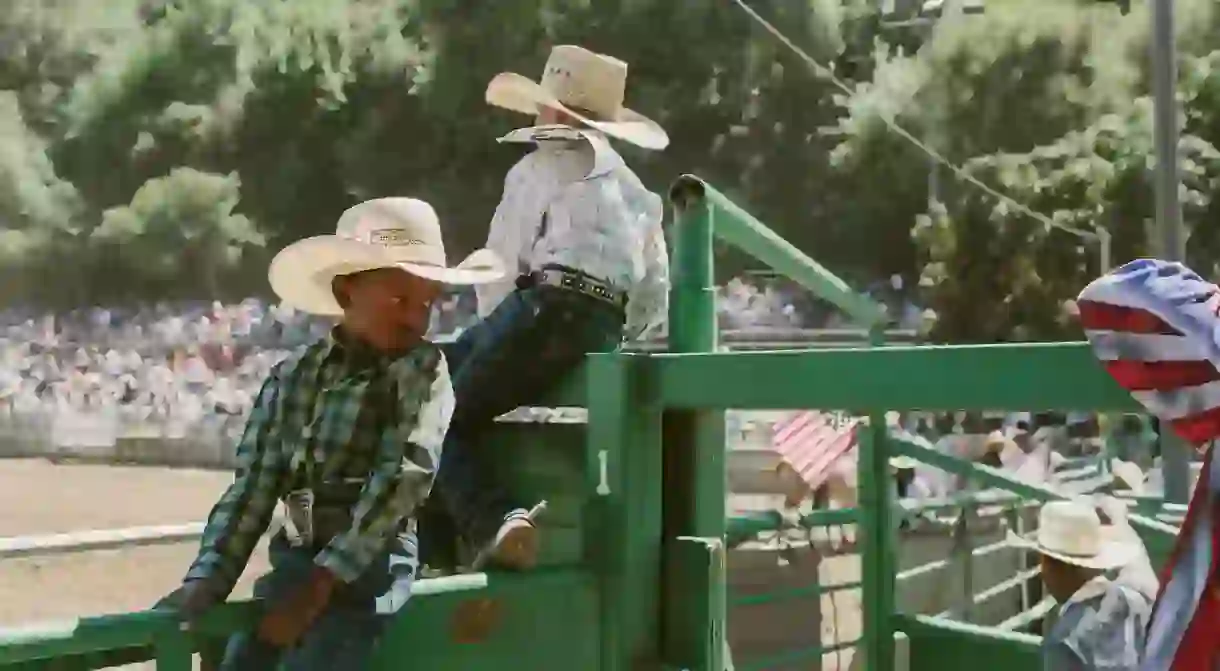Inside the USA's Only Traveling African American Rodeo

The Bill Pickett Invitational Rodeo is highlighting black rodeo talent and raising awareness of African American contributions to the country’s Western frontier.
Sometimes, stories we absorb about the past have counter-narratives that deserve to be heard. Though widely omitted from pop-culture representations, historians estimate that one in four cowboys who shaped and settled the American West were black. The Bill Pickett Invitational Rodeo was named for possibly the most famous African American cowboy of all time. Born in Texas in 1870, William Pickett was known for his spectacular rodeo exhibitions, and was posthumously inducted into numerous halls of fame for his contributions to the sport. Today, BPIR is working to re-educate rodeo audiences at the same time as entertaining them.

Regional and national coordinator Jeff Douvel speaks about the legacy of Bill Pickett, the world of BPIR and the athletes who compete in it.

Culture Trip: How does BPIR help inform people about the contribution of African Americans to the settling of this country?
Jeff Douvel: Lu Vason [BPIR’s founder] went to the granddaddy of all rodeos, which was the Cheyenne [Frontier Days] rodeo. Although he was impressed with the show itself, he noticed there were literally no African American cowboys and cowgirls. So he came back to Denver and went to a museum, and there he discovered the omitted history.
History books clearly did not want to define some of the major characters involved in opening up the Western frontier. So over the last 35 years the BPIR has served as a cultural event and an opportunity for families to enjoy and embrace the cowboy culture, while being educated and entertained with re-enactments of history.
For example, the adaptation of the Lone Ranger is actually taken from an African American marshal named Bass Reeves. One of the first African American women in the history of the Western frontier was Mary Fields, AKA Stagecoach Mary. At 67 years old she came west and became one of the most prolific stagecoach drivers in history. You hear about Annie Oakley, but you don’t hear about [Stagecoach Mary].


CT: Bill Pickett’s signature move was known as ‘bulldogging’. Can you explain what exactly that means and why it’s so influential in rodeo to this day?
JD: At that time they used dogs to herd cattle. He watched them run the cattle out of there by nipping at their feet and heels, and nipping at their ears and lips. So he developed a technique by running alongside the steer, sometimes at 30 or 40 miles per hour, with his horse, then sliding down onto the steer’s back. He would grab the horns, plant his feet firmly onto the ground while this steer is still running at an incredible speed, and bite the [animal] on its lower lip, which would then almost paralyze the steer, just as he’d seen the dogs do. And later on, he turned that into an event at the county fair, which won him a lot of acclaim. That’s how it all started.


CT: Besides Bill Pickett, who are some other African Americans who have had a profound impact on rodeo?
JD: In the modern day you’ve got Fred Whitfield, who is one of the most famous and renowned calf ropers in the industry, making millions of dollars every year.
One of the best-known bull riders right now is a young man by the name of Neil Holmes, who has won many, many championships nationwide.


CT: What’s the lifestyle of a modern cowboy competing at Bill Pickett Invitational Rodeo?
JD: Ninety percent of cowboys and cowgirls participating today have other full-time jobs in the professional arena. They save up their vacations at their regular jobs and use that vacation time to travel and compete on the weekends. And many of them travel with their kids, too.
They are up literally at the crack of dawn. And while you or I leave the rodeo arena at say 5.30 or 6 o’clock after an event, they are leaving the arena at 9, 10 o’clock because they’re working with their horse and taking care of their livestock. Rodeoing for a BPIR cowboy, or any cowboy in that culture, it’s a lifestyle.


CT: Which athletes are you excited about currently? Are there any that you think will be big rodeo stars?
JD: There are too many for me to name, and they are each excelling in their own event.
That being said, there is one seven-year-old girl I must acknowledge, because she has already won championships far above expectations. She is the granddaughter of the rodeo secretary, Sedgwick Haynes, and his wife Stephie Haynes – a cowgirl who won more championships across all categories and events than any other. This girl’s name is Kortnee Solomon and she is a rising star to keep an eye on.


CT: What is the one thing you wish people knew about African American rodeo?
JD: What I would like more than anything else is for the African American rodeo to get the same kind of respect from sponsors. We have no lack of talent; where we’re lacking is having the kind of money that allows us to pay those cowboys and cowgirls the hundreds of thousands of dollars they get by being in the Professional Rodeo Cowboys Association or the International Professional Rodeo Association. We get pennies compared to those, but our cowboys and cowgirls are just as tough, just as talented and just as athletic.





















